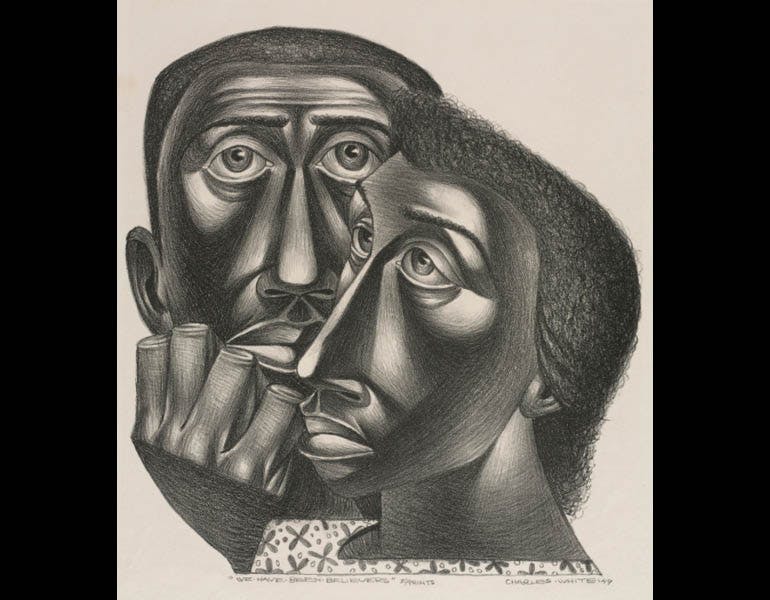- Special Exhibition

We Have Been Believers, 1949. Charles White (American, 1918–1979). Lithograph; 40.5 x 30.2 cm. The Cleveland Museum of Art, John L. Severance Fund 2001.50. © Charles White.
Our Stories: African American Prints and Drawings
Julia and Larry Pollock Focus Gallery
Featured Art
About The Exhibition
Our Stories: African American Prints and Drawings explores the concerns of black artists like Romare Bearden, Jacob Lawrence, Martin Puryear, and Kara Walker from the 1930s until today. Although some African American artists used abstract styles to investigate various aesthetic issues, most favored a straightforward, realistic approach to illustrate a range of themes introduced in the 1920s during the Harlem Renaissance, the first self-conscious cultural movement among people of color. At this time African Americans examined their history and heritage and gained racial consciousness and pride. The art produced by black artists reflects timely political and social issues, the importance of music and religion in African American culture, and candid portrayals of daily life. The realities of poverty, the search for identity, and the universal struggle for freedom, social justice, and human dignity are depicted with a rare emotional intensity and a deeply felt humanity.
Since racial discrimination had previously barred African American artists from many opportunities, they often first gained access to printmaking instruction and facilities in neighborhood art centers sponsored by the Works Progress Administration’s Federal Art Project, which from 1935 to 1943 provided jobs for thousands of unemployed artists. The WPA/FAP also funded the hiring of teachers at community art centers like Karamu House in Cleveland, where Charles Sallée, William Smith, and Hughie Lee-Smith made prints. Their work, which documents the hardships of the Great Depression, is on view in the exhibition.
Contemporary African American artists no longer rely on social realism to tell their stories, but their work continues to reflect the legacy of suffering and inequality. While Glenn Ligon and Willie Cole mine black history and literature to produce powerful and provocative images, local artist Dexter Davis divulges the effects of a childhood inundated with violence, and Lorna Simpson and Ellen Gallagher scrutinize identity issues. For most of the artists represented in Our Stories: African American Prints and Drawings, their cultural heritage defines who they are, what concerns them, and how they express their ideas.